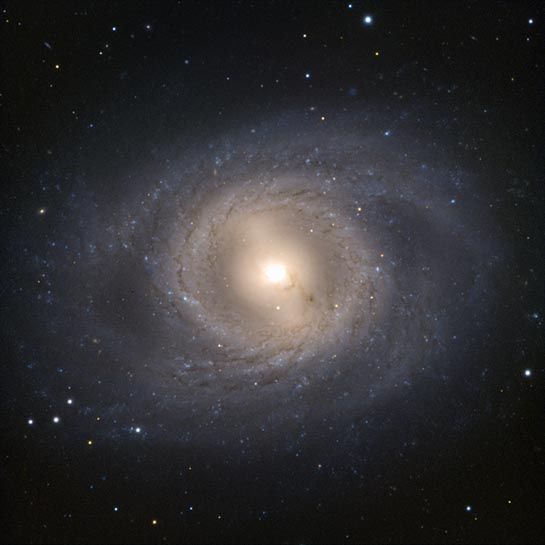
Spiral Galaxy
RA 10h 43m 57.80s Dec 11° 42' 13.36"
Leo
35 million light years
9.7
6.80 x 6.81 arcminutes
North is 89.9° left of vertical
ESO
March 19, 2012
Related images: G0515 G1212 G1841
ABOUT THIS IMAGE:
The Very Large Telescope has captured another member of the Leo I group of galaxies, in the constellation of Leo (The Lion). The galaxy Messier 95 stands boldly face-on, offering an ideal view of its spiral structure. The spiral arms form an almost perfect circle around the galactic centre before they spread out, creating a mane-like effect of which any lion would be proud.
Another, perhaps even more striking, feature of Messier 95 is its blazing golden core. It contains a nuclear star-forming ring, almost 2000 light-years across, where a large proportion of the galaxy's star formation takes place. This phenomenon occurs mostly in barred spiral galaxies such as Messier 95 and our home, the Milky Way.
In the Leo I group, Messier 95 is outshone by its brother Messier 96 (see g1143). Messier 96 is in fact the brightest member of the group and - as "leader of the pride" - also gives Leo I its alternative name of the M 96 group. Nevertheless, Messier 95 also makes for a spectacular image.
Stop
press! By coincidence Messier 95 is the host of a probable supernova
that was first spotted on March 17, 2012. Please note that the observations
used to make this picture were taken before the supernova occurred, and
therefore the supernova itself does not appear in this image.